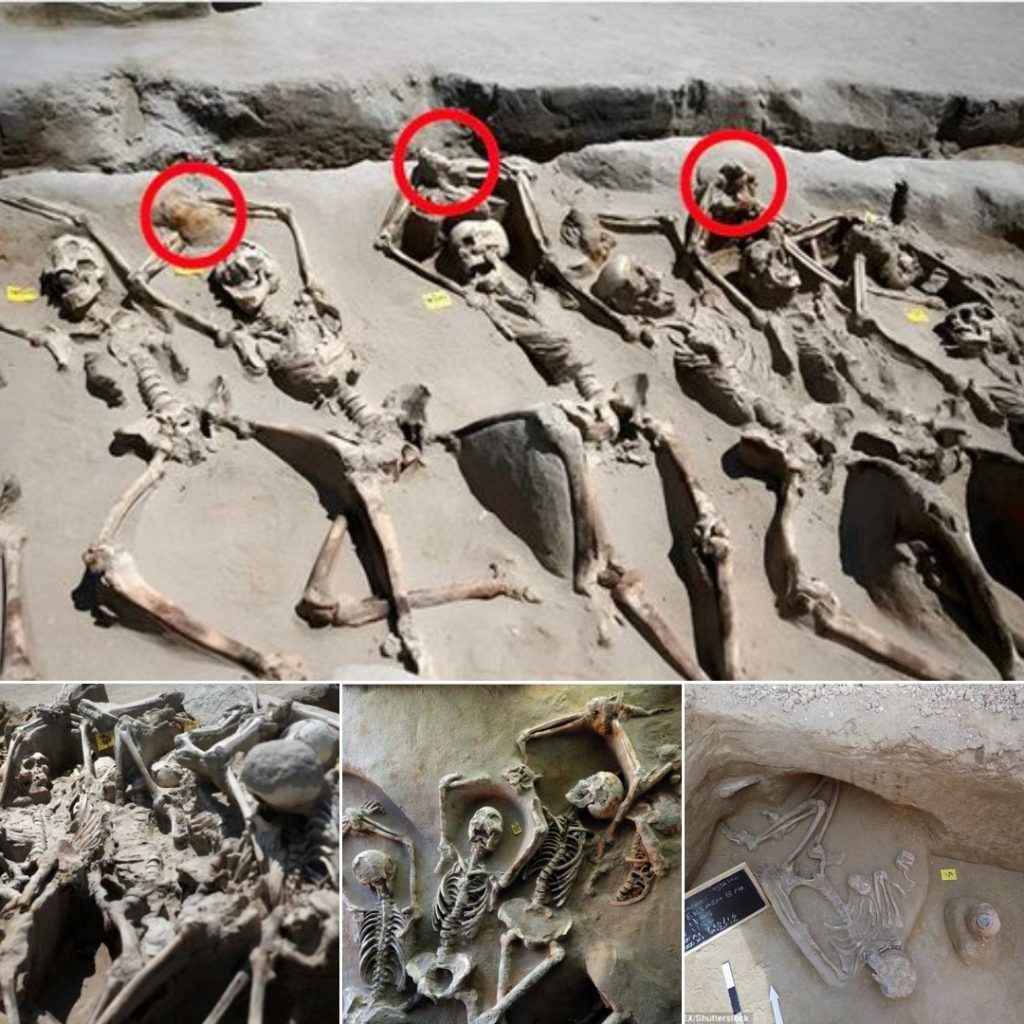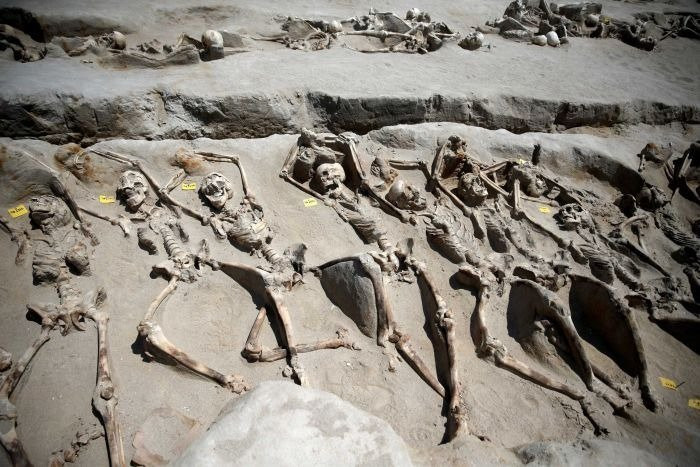In the bustling city of Athens, where contemporary structures blend seamlessly with remnants of an ancient civilization, archaeologists have made a chilling discovery that sheds light on the city’s tumultuous past. At the Faliron Delta necropolis, a mass grave containing eighty shackled skeletons has emerged from the earth, captivating both researchers and history enthusiasts. This eerie find serves as a haunting reminder of the complex and often violent history of one of the world’s most renowned ancient cities.
During the construction of a national opera house and library, workers stumbled upon an astonishing sight. Buried beneath the sandy terrain lay the skeletal remains of at least eighty individuals, their wrists bound with iron shackles. The sight was both macabre and fascinating, sparking widespread curiosity about who these people were and what tragic events led to their untimely deaths. The discovery has opened a window into Athens’ ancient history, revealing a narrative steeped in mystery and intrigue.

Leading the excavation efforts, Dr. Stella Chryssoulaki, a distinguished archaeologist, has been instrumental in uncovering clues about these individuals. Despite the grim circumstances of their deaths, the victims were interred with a measure of dignity. Most of them were young and healthy at the time of their execution, with their arms bound above their heads in a manner that suggests they may not have been ordinary criminals or slaves. Instead, the orderly burial hints at a deeper significance—perhaps these individuals were participants in a dramatic and pivotal event in Athens’ history.
One prevailing theory connects these remains to the failed coup attempt led by Cylon, an Athenian noble and Olympic champion, in 632 BC. Historical records recount that Cylon, emboldened by his noble lineage and athletic prowess, sought to seize power in Athens with the support of his followers. While Cylon himself managed to escape, his supporters were not as fortunate. Captured and executed, they may well be the individuals whose remains were found shackled in the mass grave. If this theory holds true, these skeletons represent a vivid link to a key moment in Athens’ early political turmoil.
The significance of this discovery extends beyond the tragic fate of these individuals. The Faliron Delta necropolis itself is a treasure trove of historical insights, holding more than 1,500 bodies from the 8th to 5th century BC. This site—unlike the more famous Kerameikos cemetery—offers a unique glimpse into the lives of ordinary Athenians. Among the discoveries are infants buried in ceramic pots, adults laid to rest in stone coffins, and now, this enigmatic mass grave. Together, these finds paint a rich and multifaceted picture of ancient Athenian society, revealing both its everyday practices and extraordinary events.
As excavations continue, researchers are optimistic about what further analysis might reveal. DNA testing is expected to play a critical role in unraveling the mysteries surrounding these shackled skeletons. By examining genetic markers, scientists hope to learn more about the origins, familial ties, and possible social status of the individuals buried here. Such insights could not only confirm existing theories but also unveil entirely new aspects of Athens’ history.
Dr. Chryssoulaki has expressed a vision for the future of this site. She hopes to see a museum established at the necropolis, where these findings can be preserved and shared with the public. Such a museum would serve as a bridge between the past and present, allowing future generations to engage with the rich and complex history of Athens. It would stand as a testament to the city’s enduring legacy and the stories of its people—both ordinary and extraordinary.
The discovery of the shackled skeletons has also sparked philosophical reflections on the nature of death and memory. One archaeologist poignantly described a cemetery as “a first and last photograph in antiquity of those people that pass from life to death.” This sentiment underscores the profound human connection that transcends time, as we look upon the remains of these individuals and ponder their lives, struggles, and ultimate fate.
In the shadow of Athens’ modern skyline, the Faliron Delta necropolis offers a stark contrast between the present and the past. The mass grave, with its eerie rows of shackled skeletons, serves as a somber reminder of the city’s complex and often violent history. Yet, it also provides an opportunity for reflection and learning. Through meticulous study and preservation, this site has the potential to illuminate the lives of ancient Athenians in ways that resonate deeply with the modern world.
Athens has long been celebrated as a cradle of democracy, philosophy, and art. However, discoveries like the Faliron Delta necropolis remind us that its history is also marked by strife and sacrifice. The stories unearthed from these graves add depth and nuance to our understanding of the city’s past, revealing not just its triumphs but also its tragedies.
As researchers delve deeper into the mysteries of the Faliron Delta, the shackled skeletons continue to capture the imagination of people around the world. They represent more than just remnants of the past; they are a testament to the resilience and complexity of human history. Whether these individuals were supporters of a failed coup, victims of political upheaval, or participants in some other unknown event, their story is one that demands to be told.

The ongoing excavation of the Faliron Delta necropolis is a testament to the power of archaeology to uncover hidden chapters of history. It is a field that not only seeks to understand the past but also to connect it to the present, fostering a greater appreciation for the human experience across time. In this way, the discovery of these shackled skeletons serves not only as a reminder of Athens’ tumultuous history but also as an invitation to explore the enduring questions of identity, power, and memory.
In Athens, where the echoes of antiquity linger in every corner, the Faliron Delta necropolis stands as a poignant symbol of the city’s layered history. It is a site that challenges us to confront the complexities of the past while inspiring us to seek deeper understanding. As the story of the shackled skeletons unfolds, it promises to enrich our knowledge of ancient Athens and remind us of the enduring power of history to shape our world.





